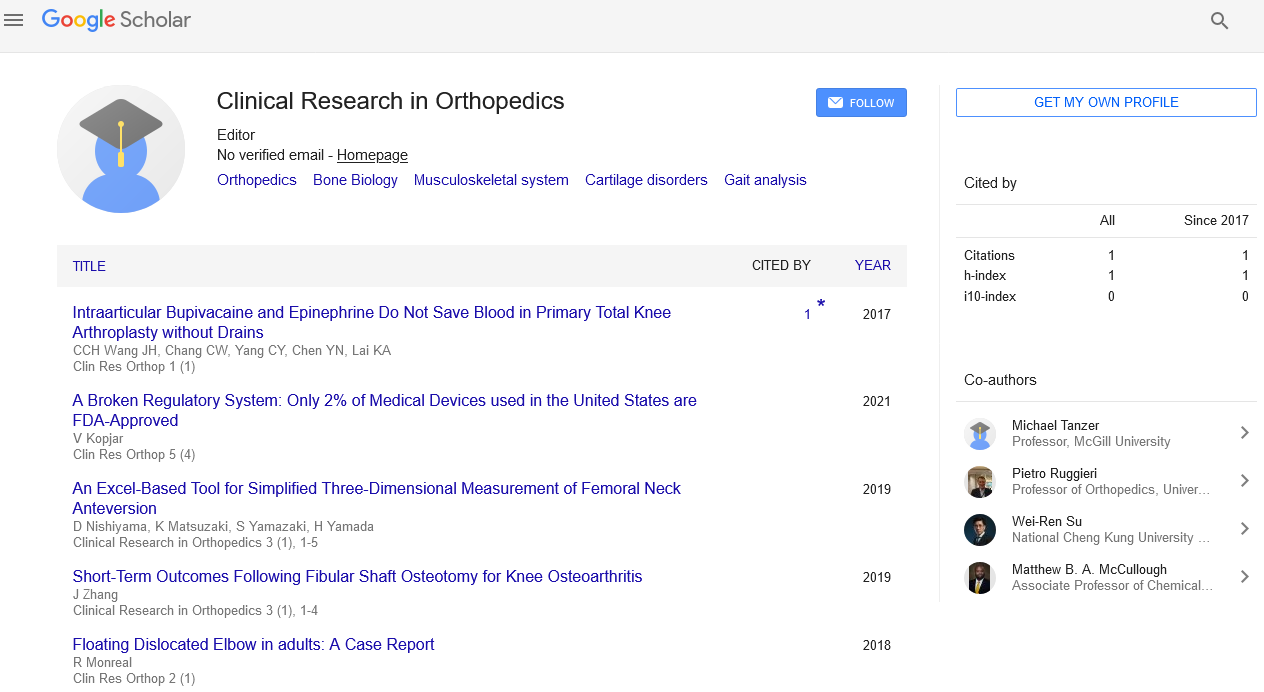The preservation of viable soft tissue and bone in the initial staged procedure for the complex closure of lower extremity amputations; A case report
Colin Mizuo, Andrew Pierre and Christopher E Attinger
Medstar Washington Hospital Center, USA
Medstar Georgetown University Hospital, USA
: Clin Res Orthop
Abstract
The availability of viable soft tissue for skin coverage following a midfoot amputation from a polymicrobial infection often impedes the surgeon’s preference for primary closure. A drainage amputation with loss of viable tissue in the setting of polymicrobial infections tends to be the accepted procedure. This case reports describe a 57year-old woman who was originally scheduled for an elective outpatient procedure but upon arrival, was noted to have an ulcer that required subsequent debridement. The following day, the patient was noted to have gas gangrene in the plantar forefoot that ultimately led to a partial midfoot amputation. The preservation of viable soft tissue and bone at the initial amputation led to a successful skin closure that otherwise would have required wound vac therapy and graft application. In the setting of staged procedures for lower extremity amputations the authors have found that preserving all viable soft tissue and bone at the first operative room visit can lead to more successful limb salvage outcomes.
Biography
Colin Mizuo, he is a resident physician and surgeon at MedStar Washington Hospital Center and Georgetown University Hospital. He has published in reputed journals and has received many awards and rewards from different events.
E-mail: cmm0297@gmail.com
 Spanish
Spanish  Chinese
Chinese  Russian
Russian  German
German  French
French  Japanese
Japanese  Portuguese
Portuguese  Hindi
Hindi 